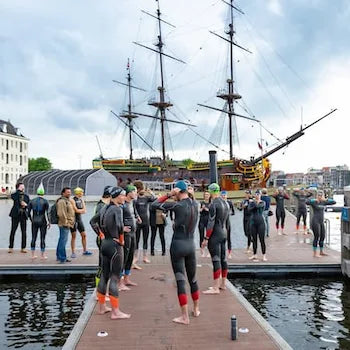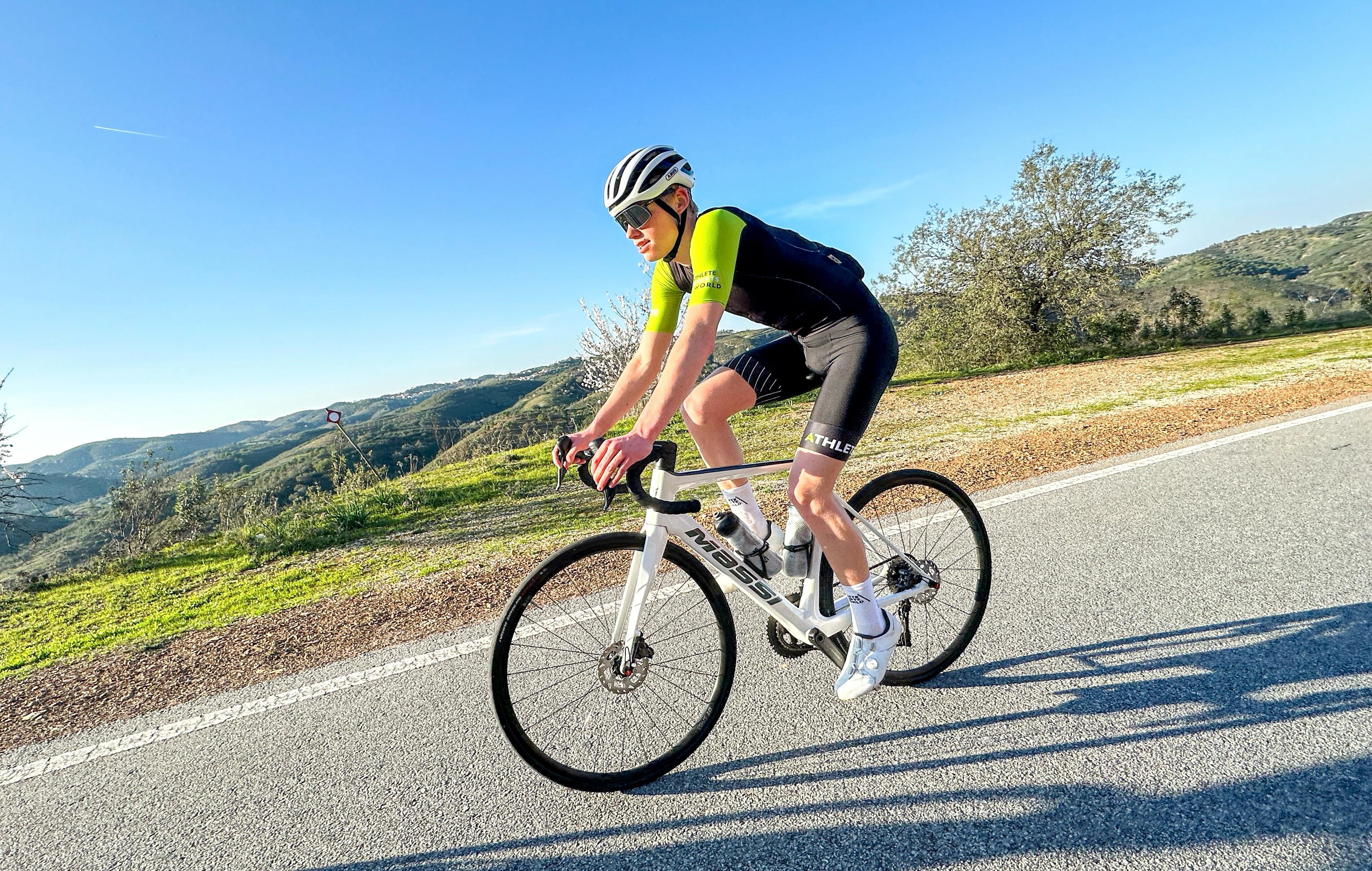Yep, it's that time again. Summer has officially come to an end. Cooling open water swimming sessions during those tropical days are gradually being replaced by winter hardcore jobs for the die-hard swimmers and triathletes.
Because the water temperatures are falling rapidly, we also have to adjust our swimming routine to it.
Time to face the cold!
But how can you do that best and safest? After all, stopping is not an option. Hard winter training determines your summer successes for next year!
That is why we give you 6 tips for effective and sensible swimming in cold, open water today.
Provide suitable swimwear
A good start is half the work. And in this case a good start means good preparation against the cold.
Because you can dress against the cold!
When you go swimming in cold, open water, it is therefore important that you have the right materials.
First of all is one Open Water Swimming Tutsuit An absolute must. It protects your body against hypothermia by allowing water inside and then holding it. In this way your body warms up that water during your swimming session and therefore keeps you warm.
Do you not yet have a wetsuit and do you doubt which best suits you? Then click here For the best advice.
Secondly, neoprene accessories cover the body parts that generally do not come up with a swimwet out. For example, think of neoprene swimming gloves, swimming socks and a swimming cap.
Warm-up
A warm-up is essential for all endurance athletes. Functions in your brain therefore switch from rest mode to active mode. The airways become wider and the blood flow in your lungs increases, so you can absorb more oxygen.
You prepare your body for this for the training and the high heart rate.
But it also literally warms you. The body temperature in your muscles is higher.
It's not called one for nothing warm-Up.
After a small jog of 10-15 minutes or a number of Jumping Jacks and Squats, your body can better deal with the cold water shock when you go into the water.
In addition, a warm-up will also provide looser muscles and improve your flexibility during your swimming session.
Finally, we recommend that you bring a brightly colored swimming buoy while swimming in open water, such as the Zone3 Safety Buoy. Especially in Dutch open water, vision is very limited. As soon as you swim underwater you can quickly find it difficult for other water users.
Swimming cuffs also often offer the option to store your keys, water bottle and telephone. Very useful if you don't like to leave your important things on the land.
Quietly into the water
Do not immediately run into the ice -cold water with enthusiasm.
Do it calmly and gradually.
When your body is completely immersed in cold water, your body temperature drops quickly.
In response, there is a chance that you will grab air, your heart rate will pop up smoothly and it can even feel as if you have hyperventilated.
To prevent that, it is better to splash your face and body a little wet in advance so that your body can get used to the cold temperature of the water.
Stay close to the coast and swim together
Open waters can be unpredictable and not everyone can always help you as quickly as in an indoor swimming pool.
So swim close to the coast so that you always have the option to pause and stand. Starting swimmers and triathletes sometimes experience stress and fear when they swim in open water for the first time. If you then pause for a moment, you will get your heartbeat under control again in no time and you can resume your training.
Also take a training partner with you. You can always keep an eye on each other. You can also give each other tips and motivational words, of course!
This keeps open water swimming safe and cozy.
Dry clothing and parka 'S
Instead of taking a hot shower immediately after swimming, it is better to get hot, dry clothing and a parka to attract.
Take a cup of tea or another hot drink, so that you can warm up quickly from the inside.
Plus, keep moving!
Just like the cold shock that your body experiences when you immediately jump in the cold water, your body also gets a fierce shock when it switches from cold to warm.
If you immediately take a hot shower, your blood pressure can fall at a rapid pace because your blood vessels open too quickly.
So avoid very active warming in a hot shower and heat yourself calmly and gradually.
Wim Hof 'S ADVICE
To prepare yourself really well for the coming autumn and winter period, we are happy to give you a tip from Wim Hof, namely:
Take cold showers!
By getting used to your body and acclimatizing on the cold, it will become familiar with it.
More importantly, because it is familiar with the cold water, your body will no longer hit in such a heavy shock when you enter the cold, open water.
Want to know more about the benefits of cold showers, according to Wim Hof? Then look at this movie!
TO ASK?
If you still have questions about swimming in cold, open water? Or do you wonder which wetsuit or neoprene accessories are most suitable for this? Then don't hesitate to put them or to come by in our store!







